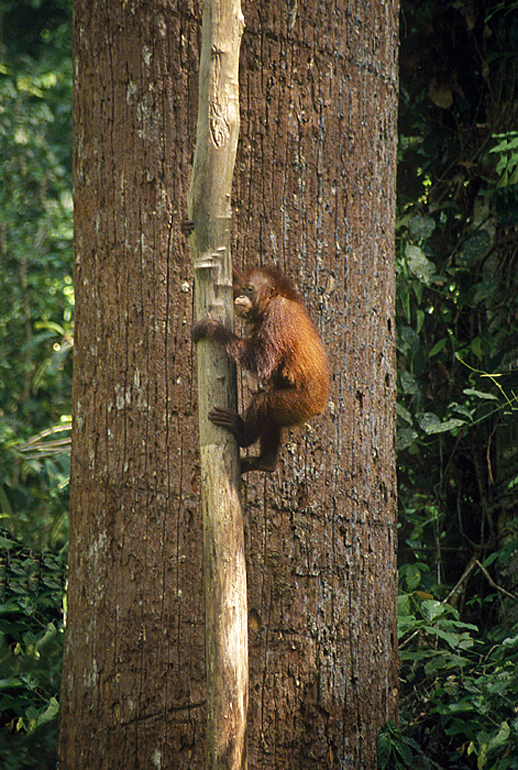
Humanity has advanced, not because
it has been sober and cautious,
but because it has been playful and rebellious.
Tom Robbins
Louis Leakey was a British paleoanthropologist who made many discoveries and much commotion in the mid 20th century. He burst onto the world stage out of Olduvai Gorge, in East Africa, with fossilized evidence that this indeed was the cradle of mankind, the Garden of Eden, if you will. This discovery, in 1959, shook the foundations of anthropology which had assumed that man's roots were in Asia. But look out world, for Louis Leakey was not about to rest on his "missing link" laurels.
"Unfortunately, behavior does not fossilize," Leakey was fond of saying. He wanted to know about the behavior of the species he had unearthed. Confident to the point of being evangelical, he possessed swagger enough to propose that the only way to get a glimpse of early man's behavior would be to study his closest relatives in the wild, the great apes. Closest relatives? Great apes? Yikes! This notion was so preposterous at the time that his colleagues (including his wife Dr. Mary) thought he'd gone mad. But Leakey was not easily dissuaded. With his flowing white mane and boundless good cheer, the "African Lion" usually got what he wanted.
He proposed a project that would be costly, time consuming, and test his considerable powers of persuasion. With unflagging enthusiasm and larger-than-life charisma, he mustered support, mostly from the National Geographic Society, to send not one, but three researchers into the jungles of Africa and Asia, to do what had never been done. They would live with the great apes, become members of their society, and painstakingly record their most intricate behaviors. It would take years and impossible patience. And Leakey rocked the proverbial boat again by insisting that only women could pull this off.
He dispatched Jane Goodall to Gombe Stream, Tanzania in 1960; Dian Fossey to Karisoke, Rwanda in 1967; and Birute Galdikas to Camp Leakey, Borneo in 1971, to study chimps, gorillas, and orangutans, respectively. None of "Leakey's Trimates," as they became known, had prior academic training or experience in field biology. It was just the way he wanted it-three driven women with blank slates, and therefore, no preconceptions.
The trimates would vindicate Leakey. All three obtained doctorates in primatology from leading universities (Oxford, Colgate, and UCLA) and established research stations that are still churning out data in 2015. This work has been hailed as some of the most important in the history of science, and, as a bonus, has sparked a worldwide interest in the plight of the great apes, all three of which are endangered.